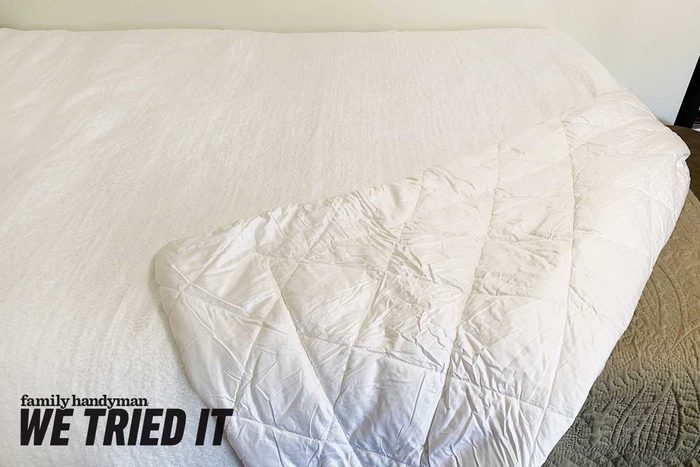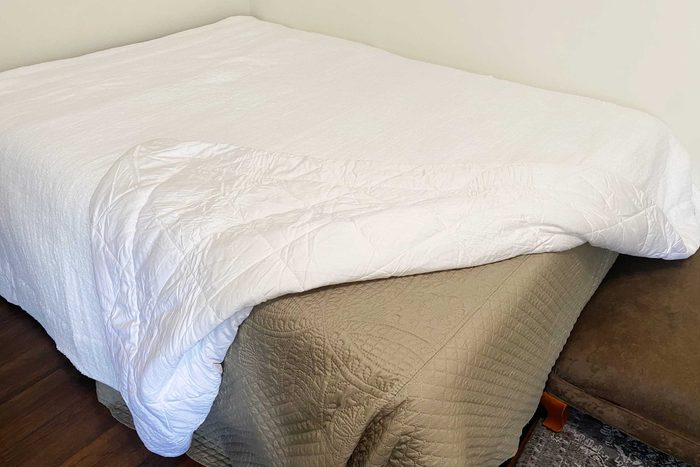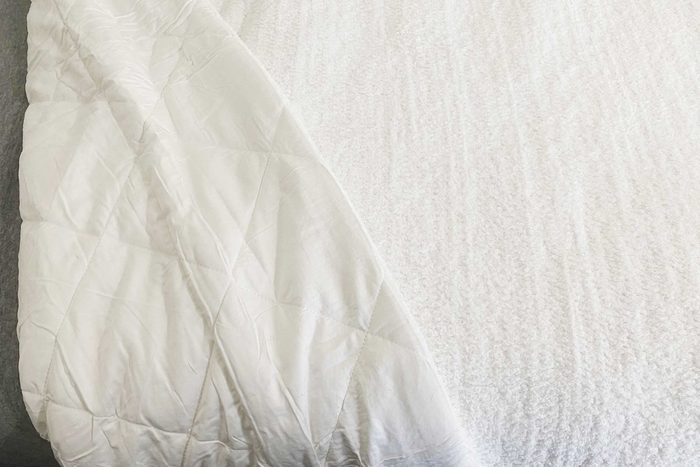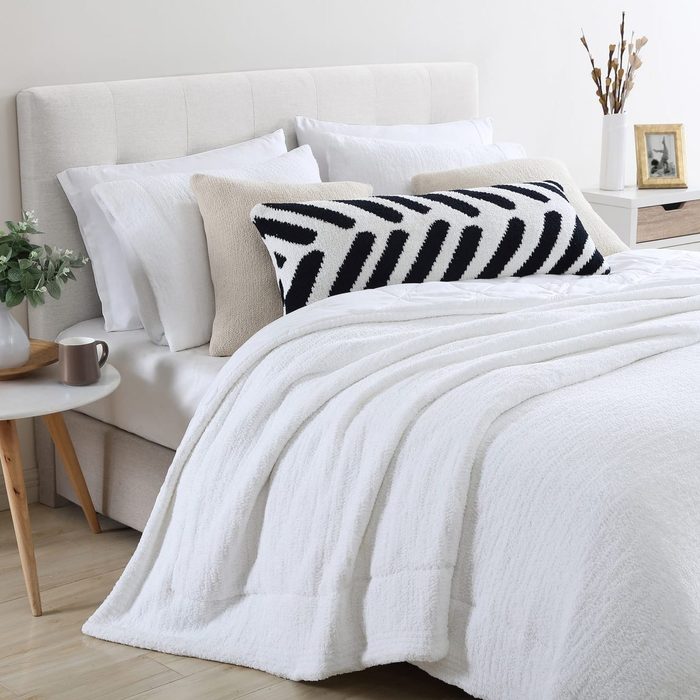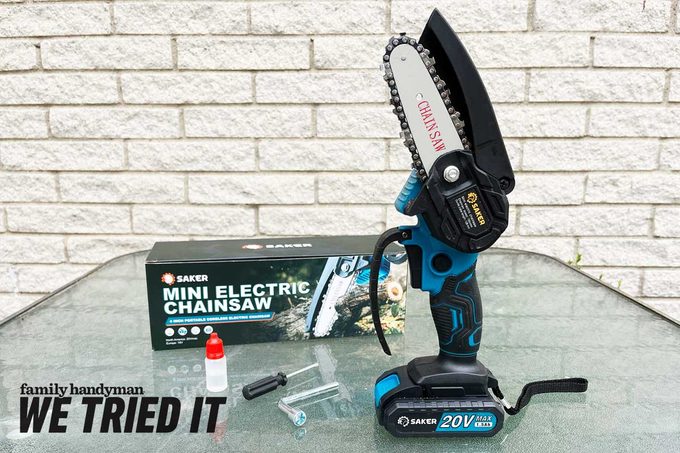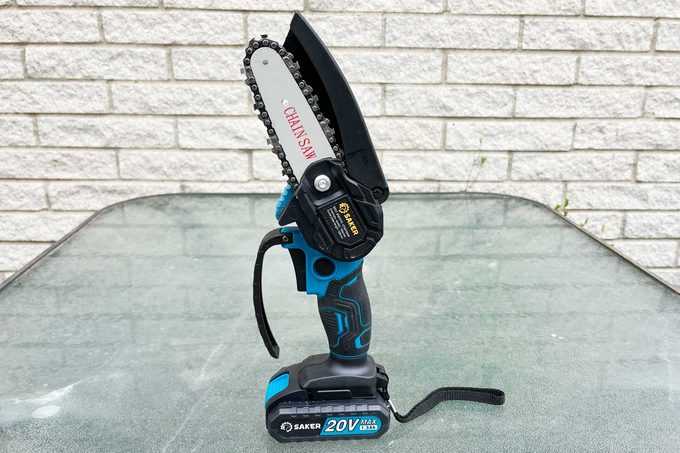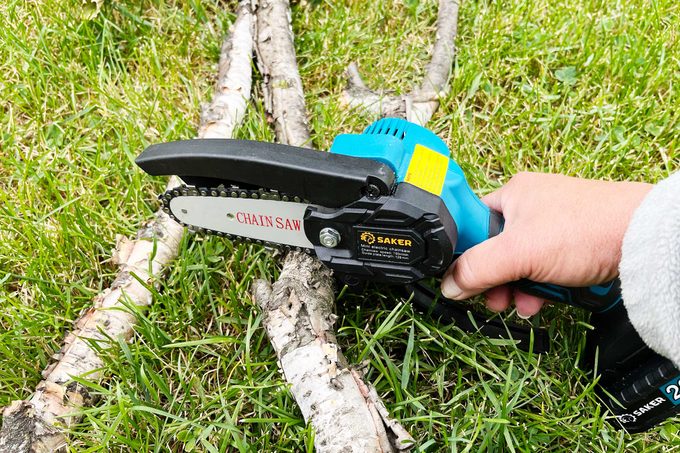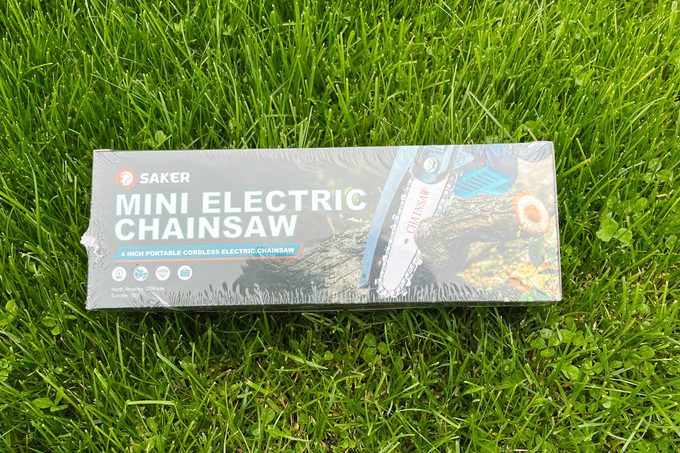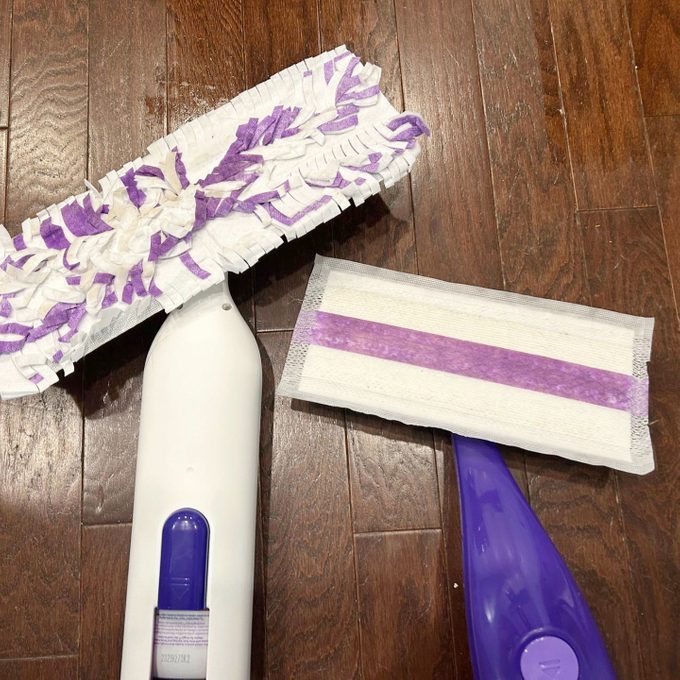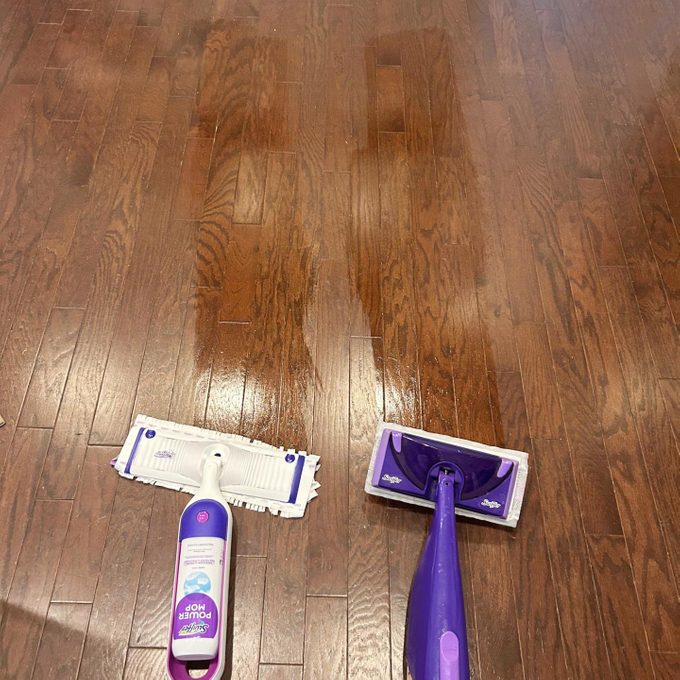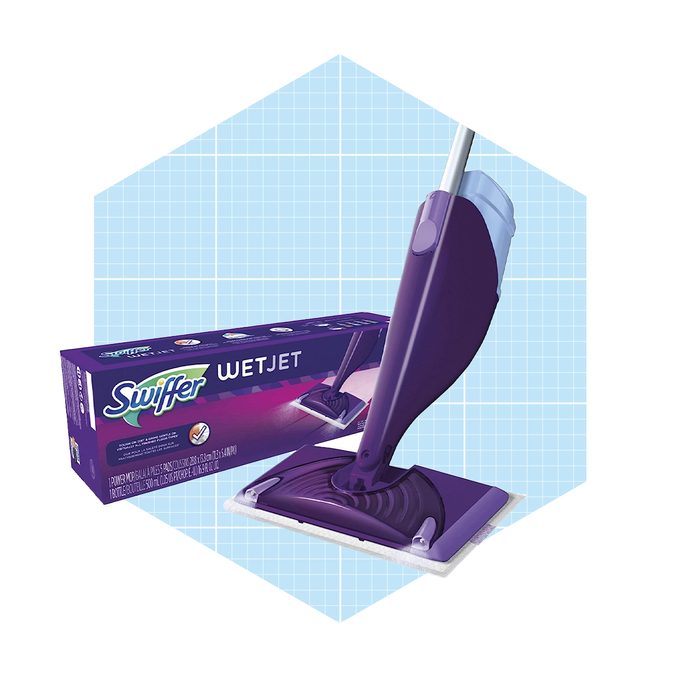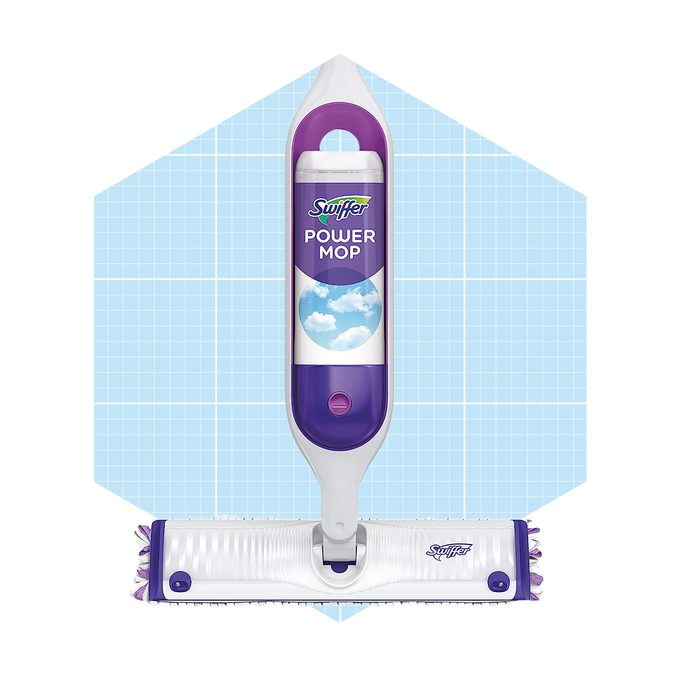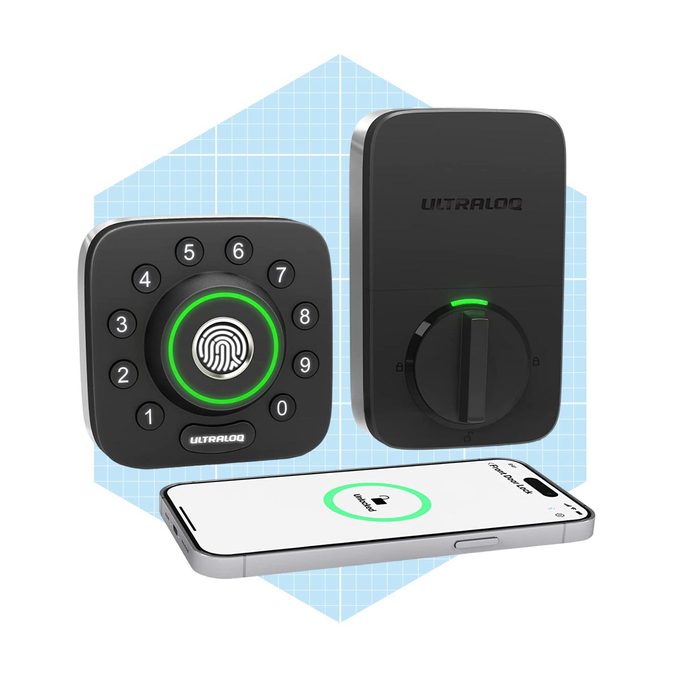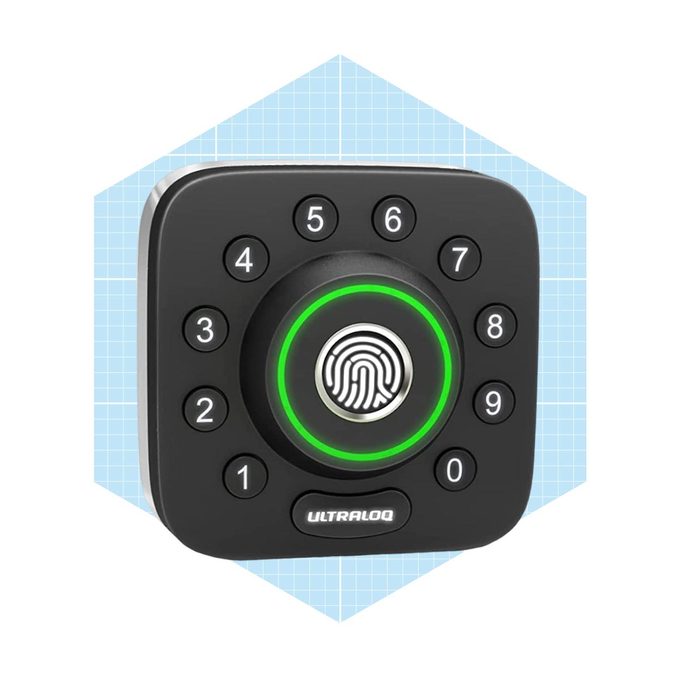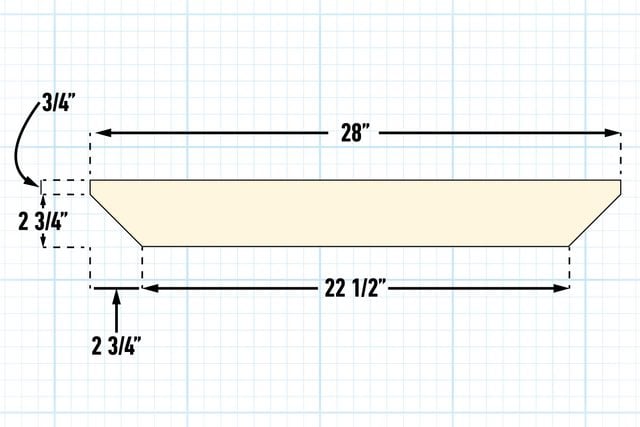We’re currently obsessed with our fire pit, and this time we have a game-changing Solo Stove accessory that’s going to turn up the heat on backyard entertaining, camping trips or date nights.
If you’ve been following our Solo Stove review series, you know that we have been testing a variety of products from the brand, including the Bonfire 2.0, Pellet Adapter and Cast Iron Grill Top. Currently, we are testing more products from Solo Stove to ensure the brand lives up to its online reputation.
This brings us to the product we’re focusing on: The Solo Stove Pi Fire, a pizza oven designed to sit on top of your existing Solo Stove fire pit. Keep reading our Solo Stove Pizza Oven review to get the full scoop (or should I say slice?) and find out how this delicious pizza-making accessory performs.
What is the Solo Stove Pi Fire?
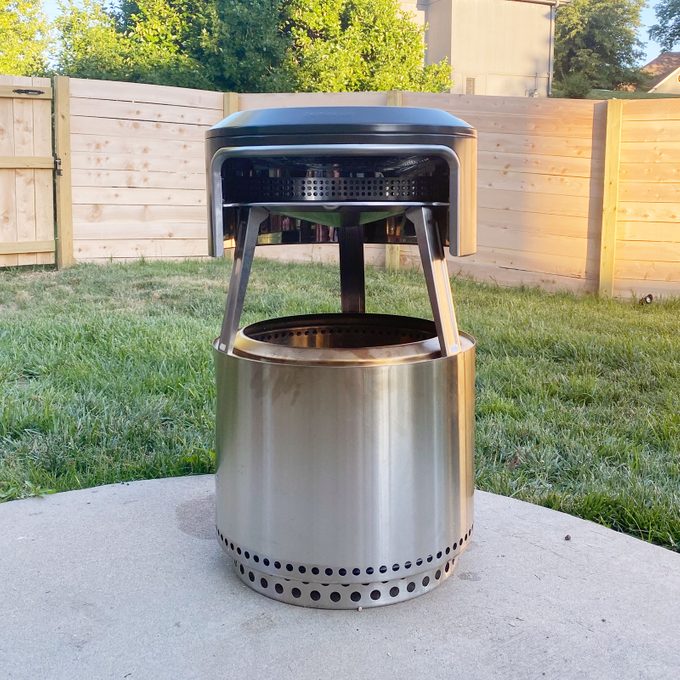
If you’ve been eager to try your hand at wood-fired pizza, the Solo Stove Pi Fire provides the ideal gateway to backyard baking. This portable pizza oven topper is designed to fit on top of your existing Solo Stove fire pit. Unlike traditional pizza ovens that have space for wood at the bottom, the Pi Fire features long legs that elevate it over your smokeless fire pit.
The Pi Fire comes in three sizes to attach to any Solo Stove fire pit you may already own. We specifically tested the classic Bonfire size for our Solo Stove Pizza Oven review, but there are also options available for the larger Yukon stove and the smaller Ranger models.
Weighing in at less than 20 pounds, the Bonfire Pi Fire is lightweight and easily portable. Constructed from the same high-quality, lightweight stainless steel as the Bonfire 2.0, it can withstand the exceptionally high temperatures necessary for creating delicious Neapolitan-style pizzas.
Solo Stove Pi Fire Product Features
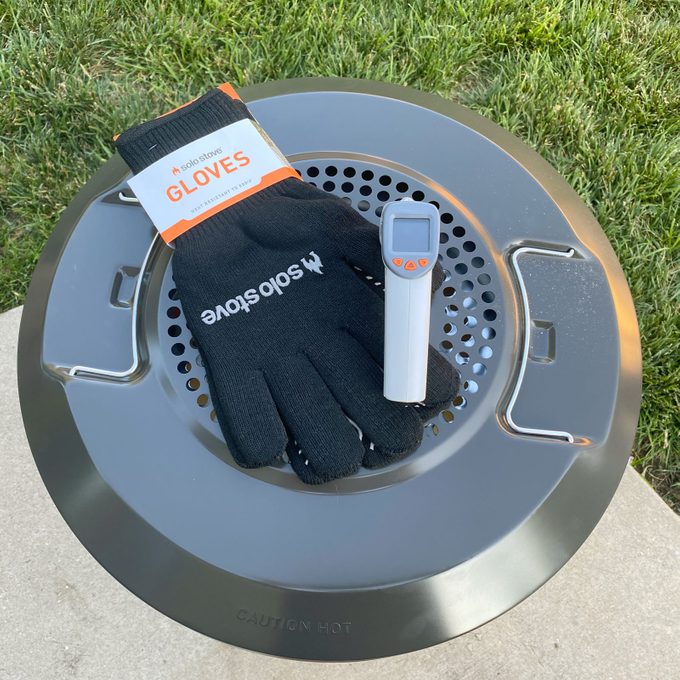
The Bonfire Pi Fire (quite the tongue twister) is about 19 inches in diameter and 17 inches in height, and the pizza stone that fits inside the oven is exactly 14 inches in diameter (which means you’ll want your pizzas to be 14 inches in diameter or smaller).
When you purchase a Pi Fire, you also get a travel carrying case and gloves for heat protection (these are necessary, by the way). You can also purchase the Pi Fire + Tools, which is what I recommend doing. That bundle includes a 12-inch bamboo peel for prepping and serving pizza, the Pi Turner 2.0 for launching and turning pizza and an infrared thermometer to gauge the temperature of the pizza oven.
The Pi Fire—and every Solo Stove product—comes with a lifetime warranty that guarantees it is free of manufacturing defects. So, if you have issues with your Solo Stove or any Solo Stove accessories, you should contact customer service.
How We Tested It
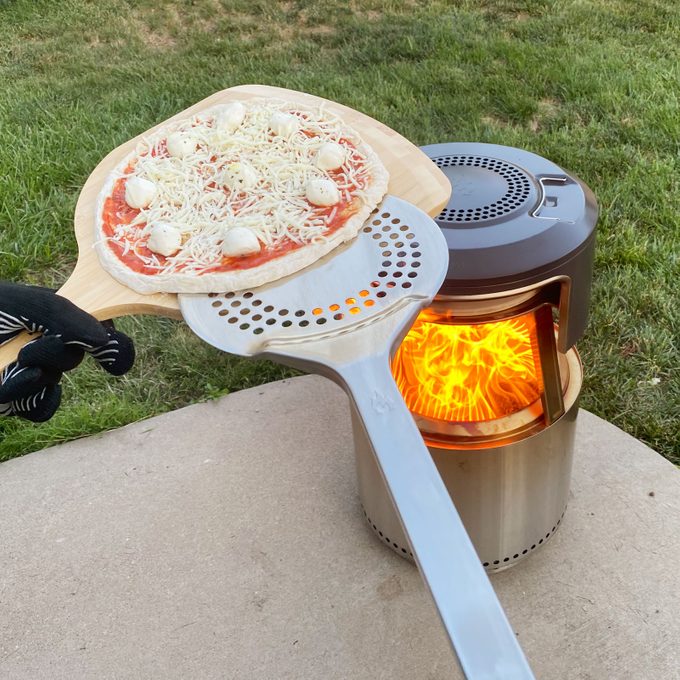
For my Solo Stove pizza oven review I tested the Pi Fire with several different pizzas and multiple fuel types. I made my own dough, once with a quick and easy recipe (flour, dry yeast, salt and oil) that didn’t call for rising. Then I tried a more authentic Neapolitan dough recipe (with ‘00’ pizza flour) and I also used pre-made dough. Truthfully, it was easiest with pre-made dough. But, if you want a true artisan pizza taste, I recommend following a recipe that calls for the ‘00’ pizza flour and letting it rise overnight.
If you want the Solo Stove experience through and through, you can order a kit of 24 Neapolitan dough balls from the brand. I did not do that as the dough balls retail for a whopping $110—but if you have the dough for the dough, I’d say go for it!
I also tested the Pi Fire using two different fuel sources: Firewood and wood-burning pellets. If you have the Solo Stove Pellet Adapter, you can use food-safe pellets to build your fire and subsequently cook your pizza. I will say that I preferred the pellet taste and cooking experience more over firewood. The flames were a bit more mellow, which was nice for baking, and I swear the pizza tasted better over logs (maybe it’s just me?).
Assembling the Pi Fire was super easy. It was just a matter of screwing on the legs, placing the pizza stone in the oven and setting the Pi Fire on top of the fire pit. It is easier to have the Pi Fire on your Solo Stove fire pit before starting the fire, that way you’re not trying to place and adjust the pizza oven over live, hot flames.
When it comes to cooking the pizza, you want to make sure your fire has had time to reach 500 to 650 degrees Fahrenheit before launching your pie. Smaller pies (under 10 inches in diameter) with fewer toppings (think classic Margherita pizzas) are easier to launch and rotate in the oven, which is something to keep in mind if you’re a novice pizzaiolo.
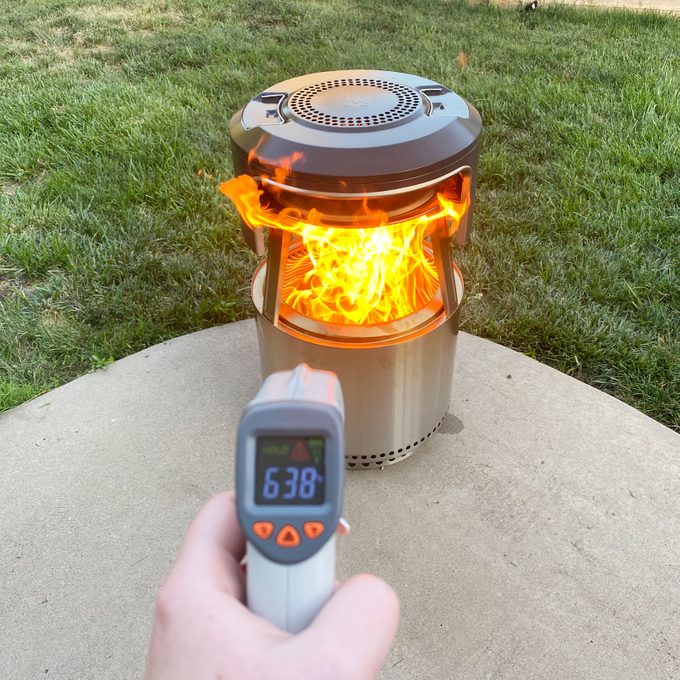
Compared to some of our favorite outdoor pizza ovens, which typically run around 1,000 degrees Fahrenheit, the Solo Stove Pi Fire offers a more leisurely (and forgiving) cooking experience. If you’re new to the backyard pizza oven game, I’d recommend starting on the lower end of the heat scale (around 500 to 550 degrees) to get your footing.
Cleanup was practically nonexistent! After the pizza oven and fire pit cooled down, I simply wiped down the pizza stone with a towel, and that’s it. There wasn’t any stuck-on mess that required scraping or a deeper clean. Then, I went about cleaning up the Solo Stove fire pit as usual, which involved wiping down the pellet adapter (when I used it) with a dry cloth and emptying the ash pan at the bottom.
Pros
- Pi Fire fits securely on top of Solo Stove fire pit
- Ceramic-coated stainless steel can handle extremely high temperatures
- Hub is lightweight and has handles, so it’s easy to lift and set on the fire pit
- Compatible with all Solo Stove fire pits (make sure you purchase right size for your fire pit) and most Solo Stove accessories
- Comes with carrying case and heat-resistant safety gloves
- Great for backyard cooking or camping trips
- Reasonably priced compared to other pizza ovens
- Easy to set up, use and clean
- Portable
- Lifetime warranty
Cons
- Does not come with all cooking tools needed like a Pi Stainless Turner
- Medium to large pizzas can be difficult to get in and out, we recommend starting with small pizzas (about 10 inches in diameter)
FAQ

Is assembly required for the Solo Stove Pi Fire?
Yes, some assembly is required. But it is quick and easy to set up, and the Pi Fire comes with all the tools and parts you need to put it together. You’ll simply attach the legs to the base of the Pi Fire with the included screws and washers.
What temperature should the stone be before you put a pizza in the Pi Fire?
Solo Stove recommends letting the center of the pizza stone reach 500 to 650 degrees Fahrenheit before putting your pizza in to cook.
We recommend using the Solo Stove Infrared Thermometer to gauge the temperature of your pizza stone while your fire pit is roaring. You can use the thermometer to gauge the temperature of your fire while using other Solo Stove cooktops, too!
How long does it take the Pi Fire to bake a pizza?
On average, it will take 5 to 10 minutes to cook a pizza. However, there are many variables that can determine cooking time, such as the temperature of the stone and the thickness of the dough. So it’s important to keep an eye on your pie and turn it 180 degrees during the cooking process.
What Other Reviewers Have to Say
If you aren’t convinced from my Solo Stove pizza oven review, check out what other happy customers thought. With a 4.9-star rating at Solo Stove, here’s what some of the many glowing reviews had to say.
Matthew L. says the Pi Fire makes dinner fun. He writes, “Pi Fire has made pizza night fun for the whole family! I figured there would be a learning curve with several crispy pies before we got it right. Fortunately, I was wrong. It is fun and easy to use and will be a staple of our family weekends for years to come.”
Five-star reviewer Catherine S. says, “Pizza Fridays are next level since we got our Pi Fire. Brings the family together for the evening as we enjoy pizza and s’mores, then add a few more logs to the fire.”
William H. shares his experience, too. “We’ve used it a couple times now and it works great! We did some personal pizzas the first time and learned quickly how fast they cook. By the second or third pizza we were right on target. The next time we had some friends over and tried calzones and pizzas and did much better. Great flavor and fun to do,” he says.
Final Verdict
I’ve said it before, and I’ll say it again: If you’re going to shell out on a Solo Stove fire pit, you’re going to want compatible accessories and add-ons to get the most out of it.
The Pi Fire brings artisan pizza-making to your backyard (and beyond) all while you’re enjoying the light from your smokeless fire pit.
Where to Buy the Solo Stove Pi Fire
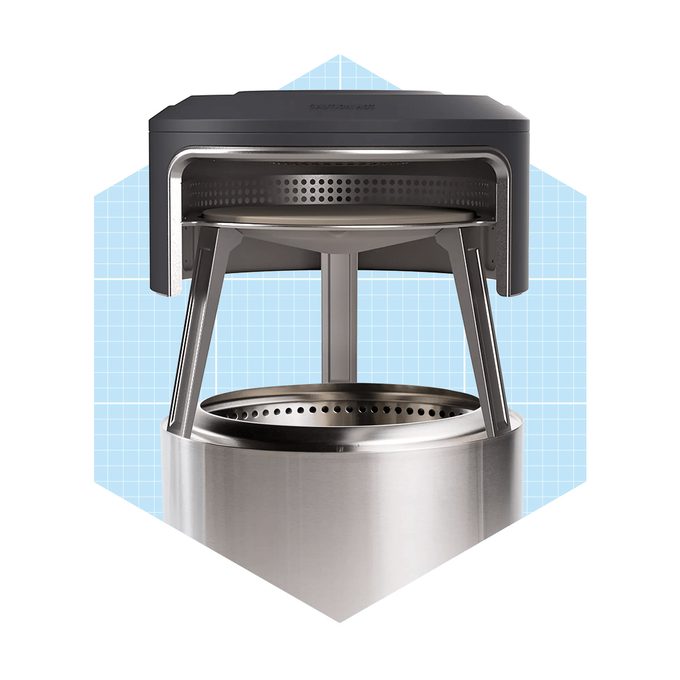
The Pi Fire retails for around $300 to $470, depending on what size Solo Stove fire pit you own. The best place to shop the pizza oven is at Solo Stove, where you’ll likely find the best deals and bundles on Solo Stove fire pits and accessories. You can also shop Solo Stove products on Amazon.
Crank up the heat on your backyard cooking with Solo Stove’s favorite fire pit accessory—the Solo Stove Pi Fire is sure to be a hit with friends and family. Shop now, and pizza night is about to get a whole lot more fun.
Shop smarter with our expert recommendations for tools, gear and money-saving deals on can’t miss DIY and home products. Sign up for the Stuff We Love newsletter.
Article source here: Solo Stove Pi Fire Review: Transform Your Fire Pit into a Pizza Oven


